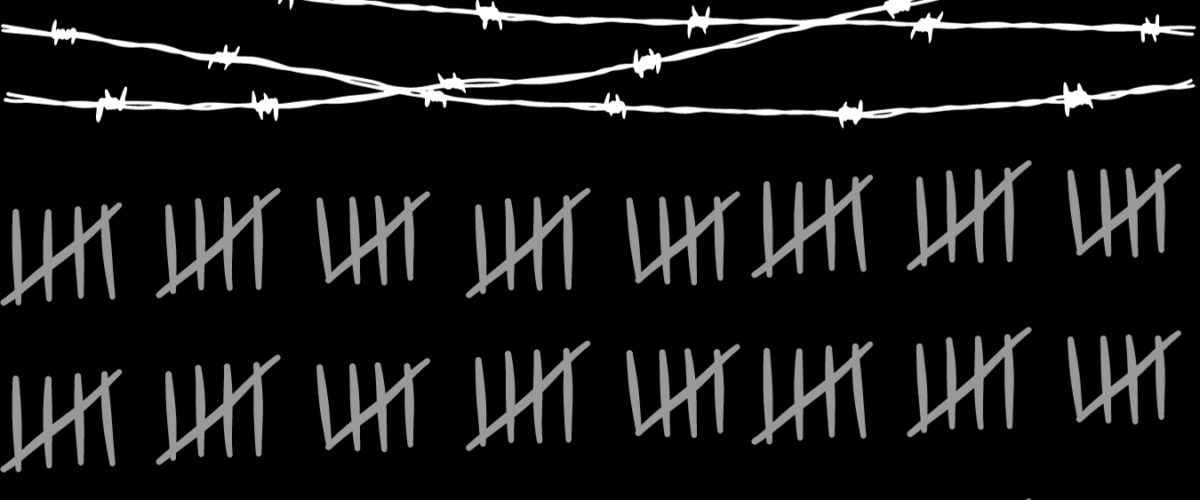This series analyses the changes proposed by the Criminal Law Bills in 2023. This article was first published as part of Project 39A’s Bharatiya Nyaya Sanhita Bill, 2023: A Substantive Analysis, a complete version of which can be accessed here.
This post analyses the ambiguities brought about by defining “life imprisonment” as imprisonment for the remainder of natural life.
The BNS has proposed a change with regards to the definition of ‘imprisonment for life’ under Cl. 4(b), defining it as ‘imprisonment for the remainder of a person’s natural life’. The IPC under s. 53 provides only for the punishment of life imprisonment simpliciter; certain offences of a sexual nature provide for imprisonment for the remainder of a person’s natural life.
I. Current legal interpretation of ‘imprisonment for life’
Courts have interpreted imprisonment for life simpliciter to mean imprisonment for the remaining period of the person’s natural life (‘whole life sentence’).[1] However, ss. 432 and 433, CrPC provide the appropriate government with the power to suspend, remit, or commute a sentence imposed by any court for any offence. The only restriction in such power is provided under s. 433A, CrPC where release of a person sentenced to imprisonment for life is not permitted till they have served at least fourteen years of their actual sentence.
As to whether a whole life sentence can restrict the executive powers of remission, the Supreme Court in Shatrughna Baban Meshram v. State of Maharashtra opined that the statutory prescription of a life sentence that shall mean the remainder of a person’s life can “certainly restrain” such powers.[2]
Besides, executive power to remit sentences can be taken away by Constitutional courts. The Supreme Court in Union of India v. Sriharan alias Murugan[3] upheld the position in Swamy Shraddhananda (II) v. State of Karnataka[4] that High Courts and the Supreme Court can impose the punishment of a whole life sentence and place it beyond the pale of executive remission based on the circumstances of a particular case. The legal position stipulated in Sriharan, however, does not impinge upon the Constitutional powers of the President and Governor under Arts. 72 and 161 respectively to grant pardon, which cannot be restricted by statutes or judgments of the courts.[5]
II. Potential interpretations of Cl. 4(b)
The intent and implication of the proposed change in definition under Cl. 4(b) of the BNS are not clear. One possible reading is that Cl. 4(b) simply reflects the legal position that life imprisonment in fact means a whole life sentence – with the government’s powers of early release untouched. It is then unclear why some provisions introduced through the BNS state ‘imprisonment for life’ as a possible sentence while some others specifically prescribe ‘imprisonment for life, which shall mean the remainder of that person’s natural life.’ For instance, the offence of organised crime is punishable with imprisonment for life as a possible sentence under Cl. 109(6). However, punishment for murder by life-convicts in Cl. 102 specifically states that the death penalty and imprisonment for life, which shall mean the remainder of that person’s natural life are the two possible sentences. If life sentence means till the end of natural life then using two different articulations across the BNS only creates confusion about the legislative intent.
Notably, Cl. 111 BNS that introduces the offence of ‘terrorist act’ provides life imprisonment without parole as a possible punishment.[6] This is the only provision in the BNS that explicitly restricts parole for a life sentence.
Table 1 provides a list of offences where imprisonment for life is prescribed along with those offences where life sentence till the end of natural life (whole life sentence) is explicitly stated as a possible sentence.
| Imprisonment for life | Imprisonment for life, which shall mean the remainder of that person’s natural life (whole life sentence) |
| Cl. 62 Attempt to commit offences punishable with imprisonment for life | Cl. 64(2) Rape by person in authority |
| Cl. 64(1) Rape | Cl. 65(1) Rape on a woman under sixteen years of age |
| Cl. 79 Dowry death | Cl. 65(2) Rape on woman under twelve years of age |
| Cl. 87Causing miscarriage without women’s consent | Cl. 66 Inflicting injury leading to death or persistent vegetative state due to offence of rape |
| Cl. 88 Death caused due to miscarriage | Cl. 70 Gang rape |
| Cl. 101 Murder | Cl. 71 Repeat sex offenders |
| Cl. 103 Culpable homicide not amounting to murder | Cl. 102 Murder by life-convict |
| Cl. 105 Abetment of suicide of child or person with mental illness | Cl. 107(2) Attempt to murder by life convict, if hurt is caused |
| Cl. 107 Attempt to murder (1) if hurt is caused to any person by such act | Cl. 137(2) Maiming a child for purposes of begging |
| Cl. 109 Organised crime | Cl. 141 (6) Person convicted of the offence of trafficking of a child on more than one occasion (7) Public servant involved in trafficking of any person |
| Cl. 111 Offence of terrorist act | |
| Cl. 117(2) Voluntarily causing grievous hurt for any other purpose | |
| Cl. 122(1) Voluntarily causing grievous hurt by use of acid, etc. | |
| Cl. 137(1) Kidnapping | |
| Cl. 138Kidnapping or abducting in order to murder or for ransom | |
| Cl. 141 (3) Trafficking of more than one person (4) Trafficking of a child (5) Trafficking of more than one child. | |
| Cl. 143 Habitual dealing in slaves | |
| Cl. 145 Waging of war against the Government. | |
| Cl. 146 Conspiring to commit offences against the State | |
| Cl. 147 Collecting arms, etc., with the intention of waging war against the State | |
| Cl. 150 Acts endangering sovereignty, unity and integrity of India | |
| Cl. 151 Waging war against Government of any foreign State at peace with India | |
| Cl. 154 Public servant voluntarily allowing prisoner of state or war to escape | |
| Cl. 156 Aiding escape of, rescuing or harbouring such prisoner | |
| Cl. 157 Abetting mutiny, or attempting to seduce a soldier from his duty | |
| Cl. 158 Abetment of mutiny | |
| Cl. 176 Counterfeiting, or performing any part of the process of counterfeiting, coin or bank notes | |
| Cl. 177 Using as genuine, forged or counterfeit coin, etc. | |
| Cl. 179 Making or possessing instruments or materials for forging or counterfeiting coin etc. | |
| Cl. 228(1) Giving or fabricating false evidence with intent to cause person to be convicted of capital offence | |
| Cl. 261(b) Resistance or obstruction to the lawful apprehension of any person | |
| Cl. 306(7) Extortion by threat of accusation of an offence punishable with death | |
| Cl. 307(4) Attempt to commit robbery causing hurt | |
| Cl. 308(3) Murder in dacoity | |
| Cl. 308(6) Belonging to a gang associated for habitually committing dacoity | |
| Cl. 314(5) Criminal breach of trust by public servant etc. | |
| Cl. 315 Receiving of stolen property | |
| Cl. 324 Mischief by fire etc. | |
| Cl. 325 Mischief with intent to destroy rail or aircraft etc. | |
| Cl. 329(7) Grievous hurt caused whilst committing house-trespass or house-breaking. | |
| Cl. 330 House trespass to commit offence | |
| Cl. 336 Forgery of a valuable security, will etc. | |
| Cl. 337 Possession of forged documents mentioned in Cl. 336 | |
| Cl. 339 Making or possessing counterfeit seal, etc. to commit forgery | |
| Cl. 341 Fraudulently destroying or defacing a will |
Cl. 4(b) raises another kind of irregularity. Many offences under the BNS lay down imprisonment for life as a possible sentence for an offence while prescribing a whole life sentence for the aggravated form of the same offence. In such a scenario, the penological basis for a higher sentence for the aggravated offence is defeated. For instance, Cl. 64(1) of BNS penalises rape with a sentence ranging from ten years to life imprisonment, while Cl. 64(2) of BNS penalises aggravated form of rape with the same sentence but for the remainder of natural life of the offender. If ‘life imprisonment’ always means a whole life sentence as per Cl. 4(b), the punishments become the same, and the legislative intent for a stricter penalty for aggravated rape is frustrated. Similarly, the punishment for murder under Cl. 101(1) of BNS is imprisonment for life and the death penalty. However, the possible sentence for murder by a life-convict is a whole life sentence along with the death penalty. If imprisonment for life means full life as per Cl. 4(b) then the difference in punishment between murder and murder by life-convicts becomes pointless.
[1] Gopal Vinayak Godse v. State of Maharashtra (1961) 3 SCR 440.
[2] (2021) 1 SCC 596.
[3] (2016) 7 SCC 1; the dissenting opinion authored by Justice UU Lalit in Sriharan observed that it is not within the powers of courts to impose a special category of fixed term sentence that restricts the exercise of power of remission before the expiry of such stipulated period. Justice Lalit noted that this prohibits the exercise of statutory power designed to achieve rehabilitative purposes.
[4] (2008) 13 SCC 767.
[5] Maru Ram v. Union of India & Ors. (1981) 1 SCC 107.
[6] Refer to note on Cl. 111, BNS on pg. 35.





